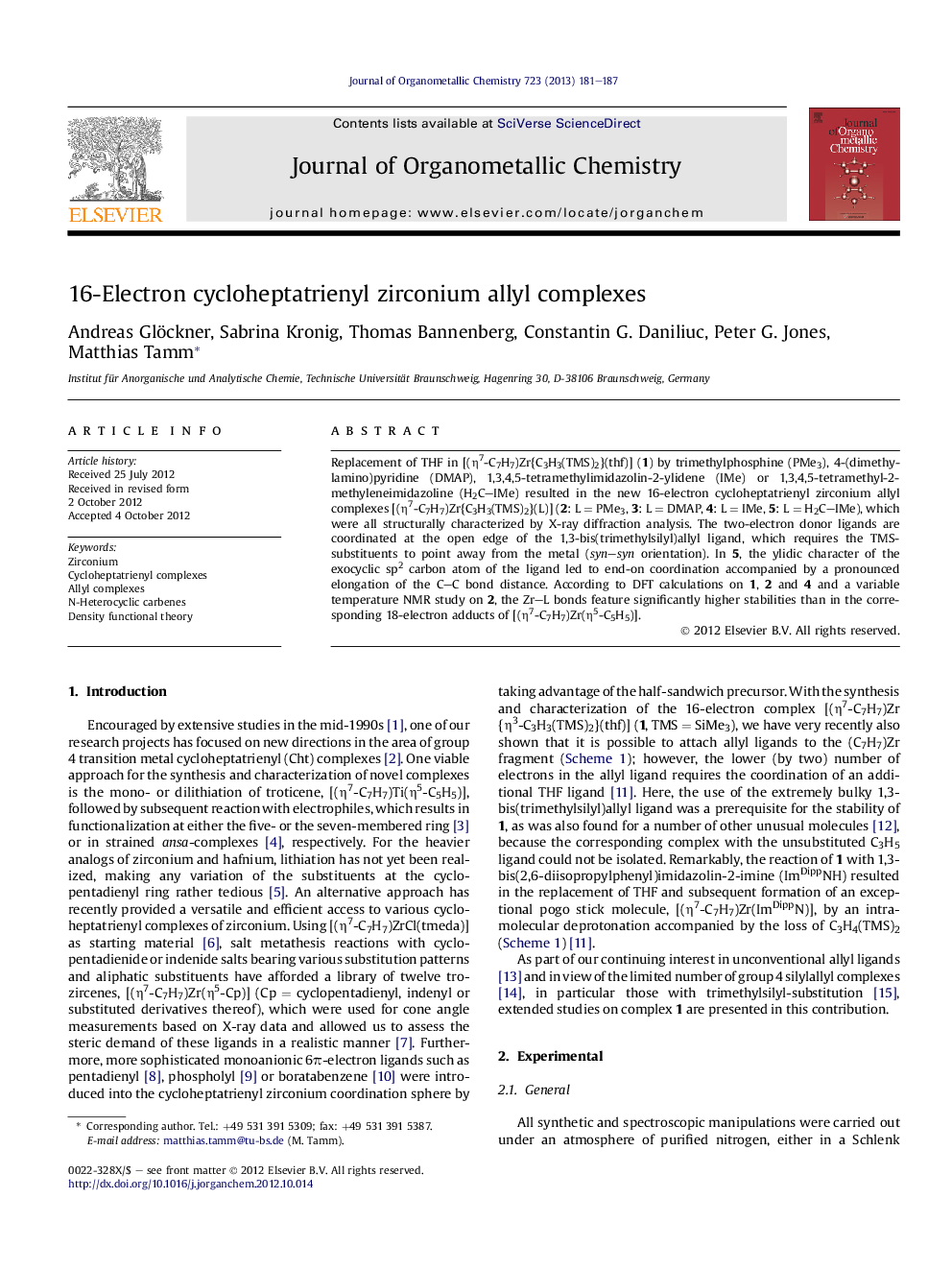| Article ID | Journal | Published Year | Pages | File Type |
|---|---|---|---|---|
| 1322968 | Journal of Organometallic Chemistry | 2013 | 7 Pages |
Replacement of THF in [(η7-C7H7)Zr{C3H3(TMS)2}(thf)] (1) by trimethylphosphine (PMe3), 4-(dimethylamino)pyridine (DMAP), 1,3,4,5-tetramethylimidazolin-2-ylidene (IMe) or 1,3,4,5-tetramethyl-2-methyleneimidazoline (H2C–IMe) resulted in the new 16-electron cycloheptatrienyl zirconium allyl complexes [(η7-C7H7)Zr{C3H3(TMS)2}(L)] (2: L = PMe3, 3: L = DMAP, 4: L = IMe, 5: L = H2C–IMe), which were all structurally characterized by X-ray diffraction analysis. The two-electron donor ligands are coordinated at the open edge of the 1,3-bis(trimethylsilyl)allyl ligand, which requires the TMS-substituents to point away from the metal (syn–syn orientation). In 5, the ylidic character of the exocyclic sp2 carbon atom of the ligand led to end-on coordination accompanied by a pronounced elongation of the C–C bond distance. According to DFT calculations on 1, 2 and 4 and a variable temperature NMR study on 2, the Zr–L bonds feature significantly higher stabilities than in the corresponding 18-electron adducts of [(η7-C7H7)Zr(η5-C5H5)].
Graphical abstractThe reaction of the cycloheptatrienyl zirconium allyl complex [(η7-C7H7)Zr{C3H3(TMS)2}(thf)] with the two-electron donor ligands trimethylphosphine (PMe3), 4-(dimethylamino)pyridine (DMAP), 1,3,4,5-tetramethylimidazolin-2-ylidene (IMe) and 1,3,4,5-tetramethyl-2-methyleneimidazoline (H2C–IMe) proceeds via THF replacement and formation of 16-electron complexes, the stability of which is probed via spectroscopic and theoretical methods.Figure optionsDownload full-size imageDownload as PowerPoint slideHighlights► Four 16-electron cycloheptatrienyl zirconium allyl complexes were prepared. ► Variable temperature NMR studies were performed. ► The complex stabilities were assessed by DFT calculations.
